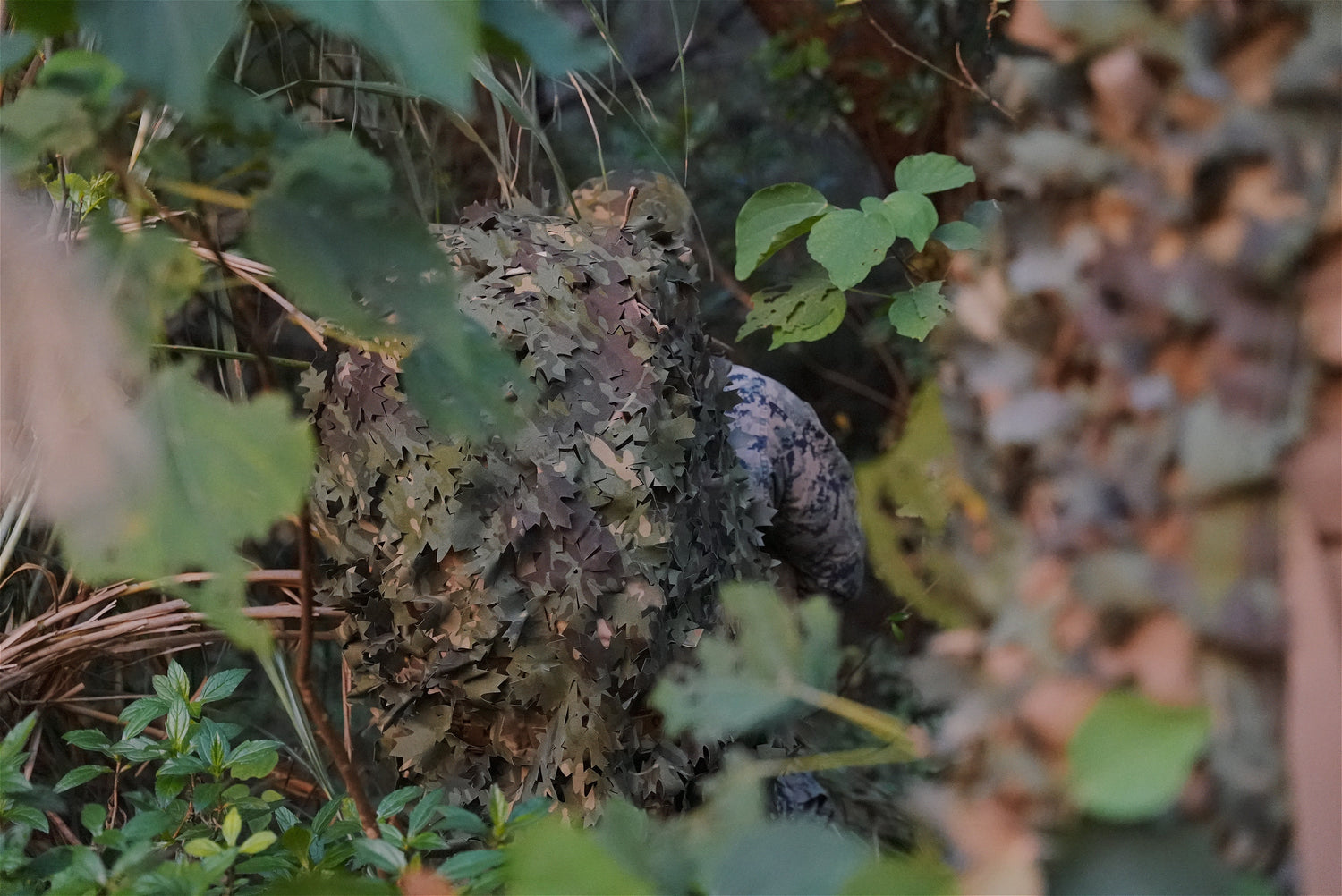Camouflage is a vital strategy on the battlefield. From the body paints used by tribal warriors to the stealth technology in modern aircraft, the art of concealment has always played a key role in military conflict. Among the most tried-and-tested and still widely used techniques today, camouflage nets are an effective solution for hiding military equipment, personnel, or infrastructure.
In a world where detection is continually improving thanks to advancements in infrared, radar, and thermal sensors, concealment systems have also evolved.
From simple mesh fabrics mimicking vegetation, they have become advanced screening solutions integrating smart materials and advanced optical properties.
In this article, we will thoroughly explore the various applications of camouflaging textiles, their effectiveness, and the groundbreaking new technologies revolutionizing military concealment.
1. An Essential Tool for Concealment | Camouflage Nets
Camouflage nets are tactical equipment designed to prevent visual and electronic detection of armed forces. Used on the battlefield since World War I, they have been refined to meet the challenges posed by new surveillance technologies.
1.1 Military Applications of Camouflage Nets
Camouflage nets serve numerous purposes, such as:
-
Concealment of vehicles and equipment: Tanks, armored vehicles, trucks, and grounded aircraft are covered with nets to avoid aerial detection.
-
Protection of strategic positions: Forward bases and temporary camps use nets to blend into the environment.
-
Soldier camouflage: Beyond uniforms, nets are used to cover trenches, bunkers, and machine-gun nests.
-
Reduction of thermal and radar signatures: Modern nets are treated with special coatings to minimize heat emissions and radar wave reflections.
1.2 Materials and Integrated Technologies in Modern Nets
Camouflage nets have evolved far beyond being mere green cloth. Today, they include:
-
Thermoregulated polymers: These materials reduce infrared emissions.
-
Radar-absorbing coatings: They minimize electromagnetic wave reflection.
-
Adaptive colors: Some nets can change their hue depending on the environment.
-
Hydrophobic nanotechnologies: They withstand extreme weather conditions.
These enhancements help armed forces maintain a strategic advantage against modern surveillance systems.
2. Smart Materials and Electrochromic Surfaces | Camouflage Nets
The integration of new technologies in camouflage nets goes far beyond traditional materials. Electrochromic surfaces and smart polymers now allow military objects and equipment to change color and pattern depending on the environment.
2.1 Adaptive Polymers and Nanotechnologies
Next-generation camouflage materials rely on advanced innovations such as:
-
Electrochromic polymers: They change color in response to electric currents, allowing camouflage to adapt to different terrains.
-
Reflective nanoparticles: These adjust how light is absorbed or reflected to mimic various natural textures.
2.2 Military Applications of Smart Materials
Adaptive polymers enable armored vehicles and grounded aircraft to alter their appearance depending on weather conditions or landscape. For instance, a vehicle camouflaged in the desert can gradually take on darker tones as the sun sets.
2.3 Technological Limits and Challenges
-
High cost: These technologies are still expensive to mass-produce.
-
Energy dependence: They require a constant power supply.
-
Extreme condition resistance: They must withstand extreme temperatures without degrading.
3. Advanced Optical Camouflage: Light Manipulation and Invisibility | Camouflage Nets
Recent advancements in metamaterials offer fascinating prospects for making objects literally invisible by manipulating light.
3.1 Metamaterials and Transformation Lenses
Metamaterials are artificial structures capable of altering how light waves propagate. By bending light around an object, they create a "shadow zone" that renders it invisible to certain wavelengths.
3.2 Limitations and Outlook
-
Manufacturing complexity: These materials require extremely precise fabrication.
-
Limited application: Most devices only work for specific wavelengths.
4. Thermal and Infrared Invisibility: Outwitting Modern Sensors | Camouflage Nets
Thermal and infrared cameras pose one of the greatest challenges to modern military camouflage. Fortunately, several technologies effectively mask the heat emitted by soldiers and vehicles.
4.1 Thermoregulated Coatings and Thermal Decoys
Heat-absorbing and reflecting materials allow for:
-
Lowering a vehicle’s thermal signature by dispersing heat into the environment.
-
Concealing soldiers' body heat with insulating fabrics.
4.2 Heat Emission Suppression
-
Advanced insulating coatings: Used to mask thermal emissions.
-
Active cooling technologies: Some combat armor now features controlled thermal systems.
5. Quantum Camouflage: A Revolution in the Making | Camouflage Nets
Current camouflage technologies remain limited to specific light spectrums. Quantum camouflage could circumvent all forms of detection.
5.1 Quantum Effects and Multi-Spectrum Camouflage
-
Quantum superposition: Could allow an object to change appearance instantly.
-
Electromagnetic wave control: The potential to manipulate how an object interacts with light.
5.2 Technological Challenges
-
Unmastered technology: Still in the theoretical research stage.
-
Energy requirements: Would demand massive amounts of energy.
6. Strategic and Ethical Impact of Military Invisibility Technologies | Camouflage Nets
Camouflage advancements raise important questions about transparency and security.
6.1 Operational Advantages
-
Ensuring tactical superiority on the battlefield.
-
Conducting stealth operations with reduced risk.
6.2 Risks of Military Escalation
-
Proliferation of stealth tech: Could lead to conflicts that are harder to monitor.
-
Global military imbalance: Technologically advanced countries could gain unprecedented strategic advantages.
6.3 Legal and Ethical Framework
-
Compliance with international law: Total concealment might conflict with certain treaties.
-
Use by non-state actors: Risk of misuse by criminal organizations.
FAQ
How effective is concealment mesh against radar detection?
Modern concealment mesh systems are engineered to significantly reduce radar signatures by disrupting electromagnetic reflections. However, they do not offer complete invisibility, especially against high-frequency or advanced radar technologies.
Is quantum camouflage currently operational?
Quantum camouflage remains theoretical for now. Although promising advances are being made in labs, no fully functional, real-world system exists yet.
Can concealment mesh block thermal imaging?
Some advanced concealment meshes are designed to suppress thermal signatures by diffusing heat or using insulating materials. While they can reduce infrared visibility, they cannot eliminate thermal emissions entirely.
Conclusion
The future of military camouflage lies in cutting-edge innovations. Between enhanced camouflage nets, smart materials, and quantum camouflage research, stealth warfare is entering a new era.
If you're looking for advanced camouflage solutions, check out Nutsof to discover the best options available.
Best regards,
The Nutsof Team
Advanced Camouflage & Defense Solutions
🌐 www.nutsof.com
Follow us on Facebook and Instagram for the latest in advanced military camouflage technologies.


